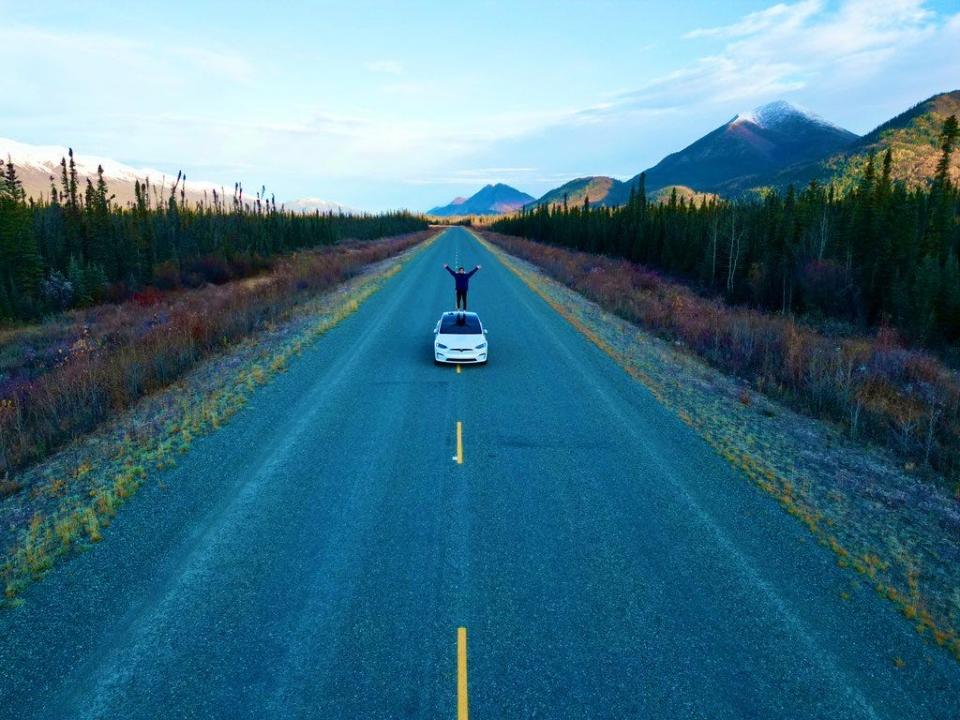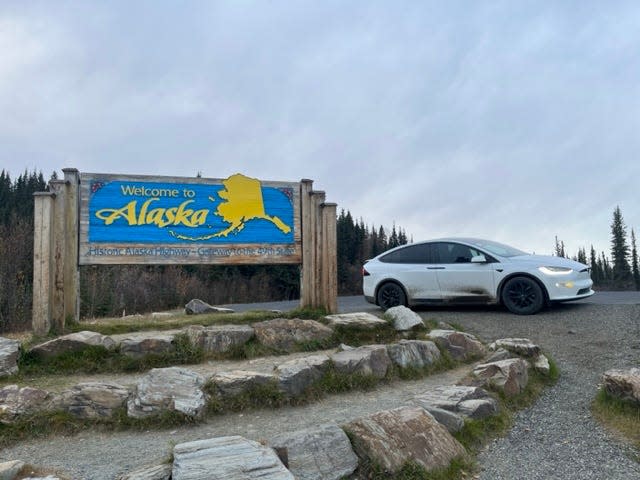A YouTuber risked taking his Tesla through a 2-day dead zone during a road trip to Alaska

YouTuber Sandro van Kuijck took his Model X on a road trip to Alaska.
Van Kuijck drove through a 320-mile stretch without public chargers or cell service.
The YouTuber has been living in his Tesla and traveling cross-country for a year.
A YouTuber took his Tesla on a road trip to Alaska through a 320-mile stretch of remote highway.
While some EV owners have shared horror stories about taking an electric car on a long road trip, Sandro van Kuijck, a YouTuber who has lived in his Tesla for the past year, has taken his EV into 49 different US states and told Business Insider he rarely experiences range anxiety.
The YouTuber said he decided to put his Model X to the ultimate test by taking it to one of the most remote areas in the US.
"I wanted to show you can take an EV anywhere," van Kuijck said.

Despite his experience with traveling with an EV, van Kuijck said his trip wasn't without some hiccups.
During his 9-day roundtrip from Oregon to Alaska, van Kuijck said he had to be wary of the range on his Model X, especially when he took the EV through a dead zone — about a 320-mile stretch of the Alcan Highway — where van Kuijck said he lost cell service and was unable to find a public charger.
"You should be able to make it with Model X range, but because the elevation changes are significant, you will not be able to make it even if the car tells you you can," van Kuijck said. "If you don't plan ahead you could potentially be stuck."
The Model X has an advertised range of about 348 miles, according to Tesla's website. But any number of factor can cause the range to drop, including extreme temperatures.
The YouTuber said in the month that he prepared for the road trip he'd learned the range on his Tesla wouldn't be able to cut it due to the cold environment and steep roads. Instead of trying to make a go of the stretch of highway in one day, van Kuijck said he stopped midway to trickle-charge his Model X at an RV site overnight on his way into Alaska.
"I wasn't panicked," van Kuijck said. "I was willing to wait however long it took to charge."
The YouTuber said he ended up needing only an additional 10% of battery life to thread the needle and make it through the dead zone.
Later, when he made his way back along the same stretch of highway on his way home, the YouTuber said he drove near the minimum speed on the highway — clocking 42 miles per hour in a 65 miles per hour zone — in order to conserve battery. Van Kuijck said he also turned off the climate control in his car and unplugged his external battery, eventually stopping at a nearby lodge to charge.
Without service, van Kuijck said he wasn't able to use his Tesla map during the two-day stretch on the way there and back. The Tesla system couldn't plot out the charging stations along his route without access to GPS and cell services.
'The car was really confused," van Kuijck said. "It would tell me that I can make the charging stops and then halfway through it tells me I won't make it and then I have to turn back around."

Van Kuijck added that he wouldn't have been able to make the trip if he'd left a month later because the RV site and lodge where he'd charged mid-way through the stretch of highway closes after the first snowfall of the season.

Despite some of the difficulties he faced along the way, van Kuijck said he was surprised to see other EV owners in Alaska, including another Tesla owner who lived in his Model Y.
"It is very difficult to get up there and back, but it's totally doable if you have some patience and you're open to the adventure," van Kuijck said.
Read the original article on Business Insider

 Yahoo Autos
Yahoo Autos 